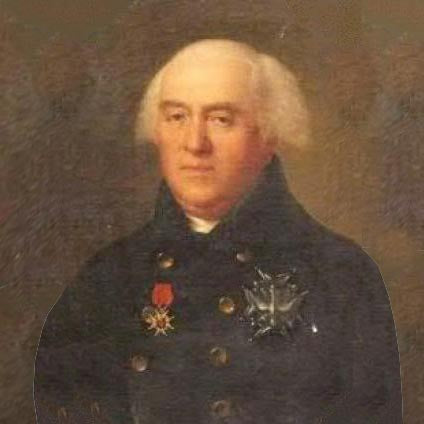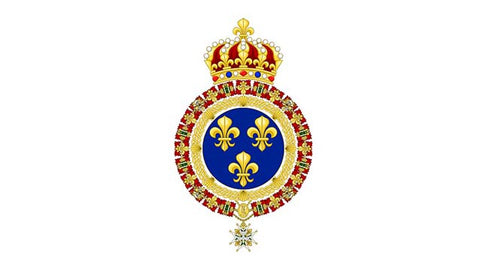
Dufort-Civrac, Protector of the White Standard
Share
This text was inspired by a list of selected customers from the Old Snuff House of Fribourgh and Treyer, at the Rasp and Crown, No. 34 St-James Haymarket, London, S.W (1720-1920).
Jean-Laurent de Durfort-Civrac, son of Jacques Aimeric Joseph, marquis de Durfort-Civrac, ambassador to Vienna, knight of honor of Madame Victoire, titled Duke of Civrac by patent of December 1, 1774, and named, on February 2, 1776, knight of the order of the Holy Spirit, and Anne-Marie de La Faurie de Monbadon, lady of the finery of Mesdames de France, was among the young lords that Louis XV admitted into the privacy of his grandchildren (notably the future Louis XVI).

He then entered "military service", and was appointed second colonel of the Languedoc-infantry regiment, then, in 1770, one of the Dauphin's menins (since Louis XVI). On March 25, 1773, he obtained the election of the land of Lorges as a hereditary duchy. Having passed through the king's military household, his sovereign successively named him camp commander of the Royal-Piedmont-cavalry regiment, on February 26, 1777, lieutenant-general in Franche-Comté on May 14, 1778, brigadier of infantry on the 5th. December 1786 and camp marshall on March 9, 1788.
Louis XVI, “who honored the Duke of Lorges with particular confidence, and who knew how devoted to his august person the Royal-Piedmont regiment that this lord had commanded”, ordered him, on the night of October 5 to 6, 1789 , to go and put himself at the head of this body and join it wherever it may be. But “this unfortunate monarch” who had to retire to Metz, yielding to the requests which took him to Paris, countermanded this order, and the Duke of Lorges, after having stayed for some time in one of his lands in Gascony, emigrated with his two sons, in 1791.

Durfort-Civrac assembled, at Limburg, a body composed largely of cavalry officers and gentlemen, and the princes brought together to this body the officers of the Colonel-General cavalry regiment, whose lieutenant-colonel had saved the white standard of the crown. After the campaign of 1792, the princes entrusted this first standard of the cavalry to the Duke of Lorges, and allowed him, in the event that he could enter France, to display it in all circumstances where this general deemed it necessary to pursue interest of the throne, relying on his prudence and his courage.
The Duke of Lorges went to England in 1794, on the promise that George III to give him command of a cavalry corps. His wait was in vain. Then, the Duke of Lorges was requested by the royalists of Poitou, who begged the king to grant them as their leader "a subject whose valor and his indefatigable zeal made him so worthy of the confidence of the prince and that of his defenders”. Events did not allow this plan to be followed up, any more than the king's intention to invest the Duke of Lorges with the government of Gascony, "where his family enjoyed influence and a consideration which would not have been useless to the royal cause.”

This title was purely nominal, since Mr. de Lorges only returned to France, with the king, in 1814. Then, the Duke of Lorges placed in the hands of His Majesty Louis XVIII the white standard of which he had had custody since 1791, and was created lieutenant general of the armies and peer of France on June 4, 1814.
Member of the large board of directors of the Hôtel des Invalides on January 10, 1816, entered in the table of pensions entered in the Public Treasury, on the date of September 1, 1817, for retirement from the rank of lieutenant-general, after 54 years service, he was appointed, on November 5, 1822, governor of the royal castle of Rambouillet, in place of the Duke of Sérent, who had died. He died in this office a few years later. He was knighted by the King on May 30, 1825.
